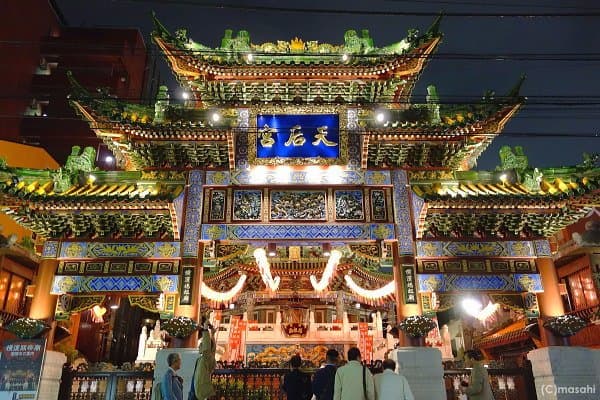
Masobyo Mazu Temple
A vibrant, colorful Chinese temple in Yokohama Chinatown, dedicated to the sea goddess Mazu, known for its grand architecture and festive celebrations...
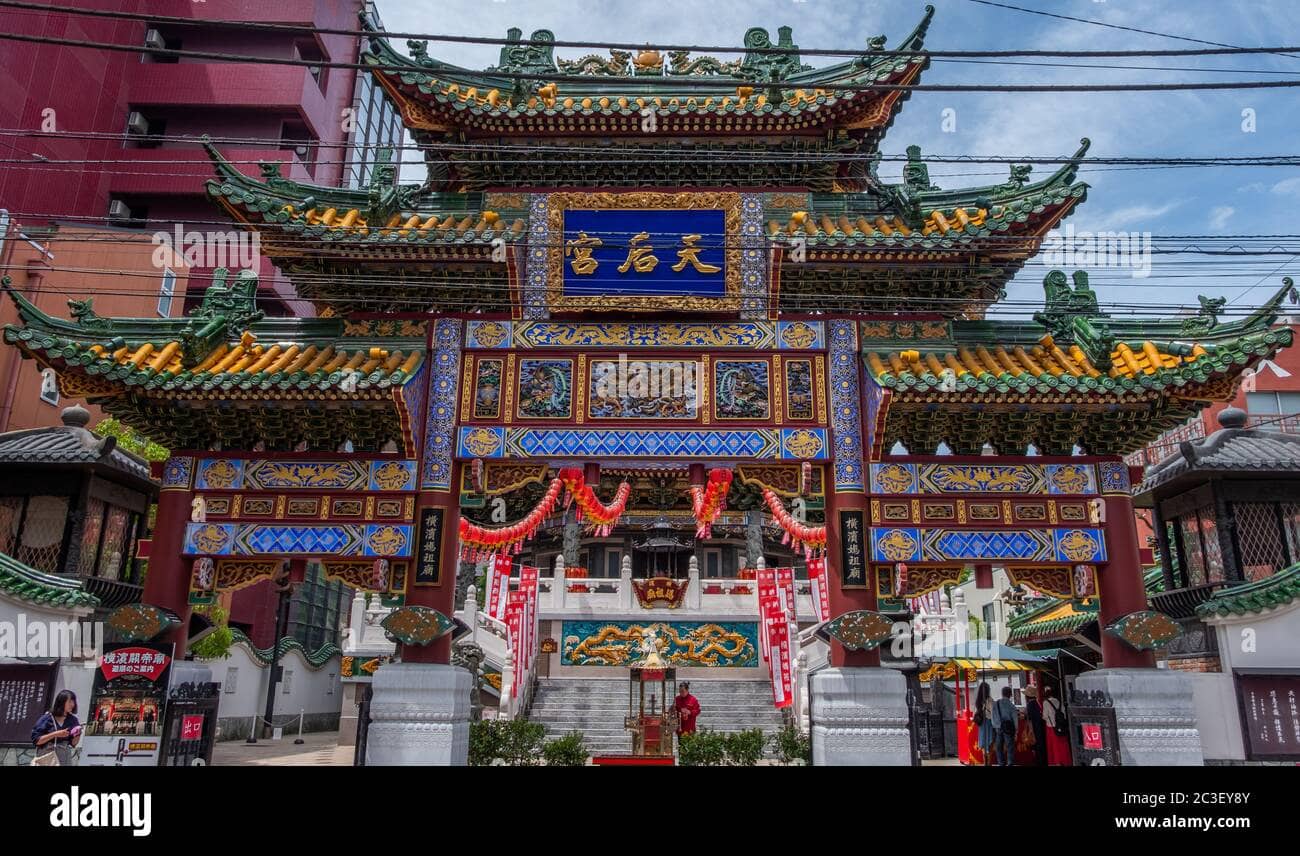
Highlights
Must-see attractions
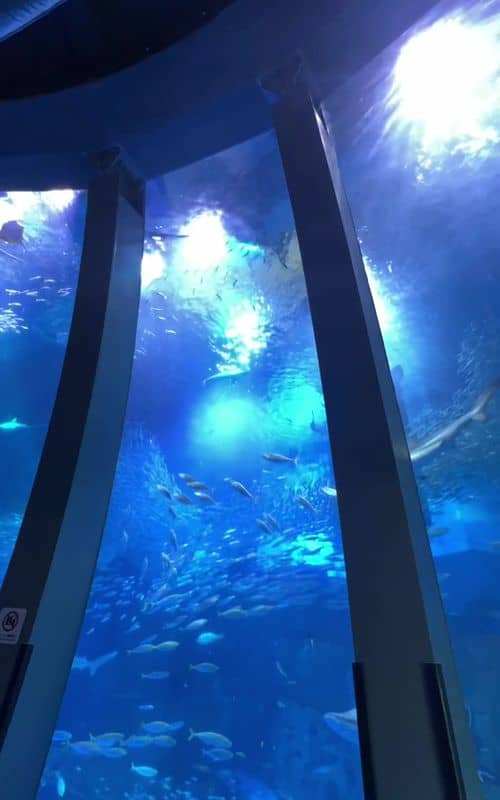
Social
From TikTok & Reddit
Best Time
Fewer crowds, better photos

Masobyo Mazu Temple
Best Time
Fewer crowds, better photos

Highlights
Must-see attractions
A vibrant, colorful Chinese temple in Yokohama Chinatown, dedicated to the sea goddess Mazu, known for its grand architecture and festive celebrations.
"This temple is a beautiful and colorful addition to Chinatown, perfect for photos and experiencing cultural festivities."
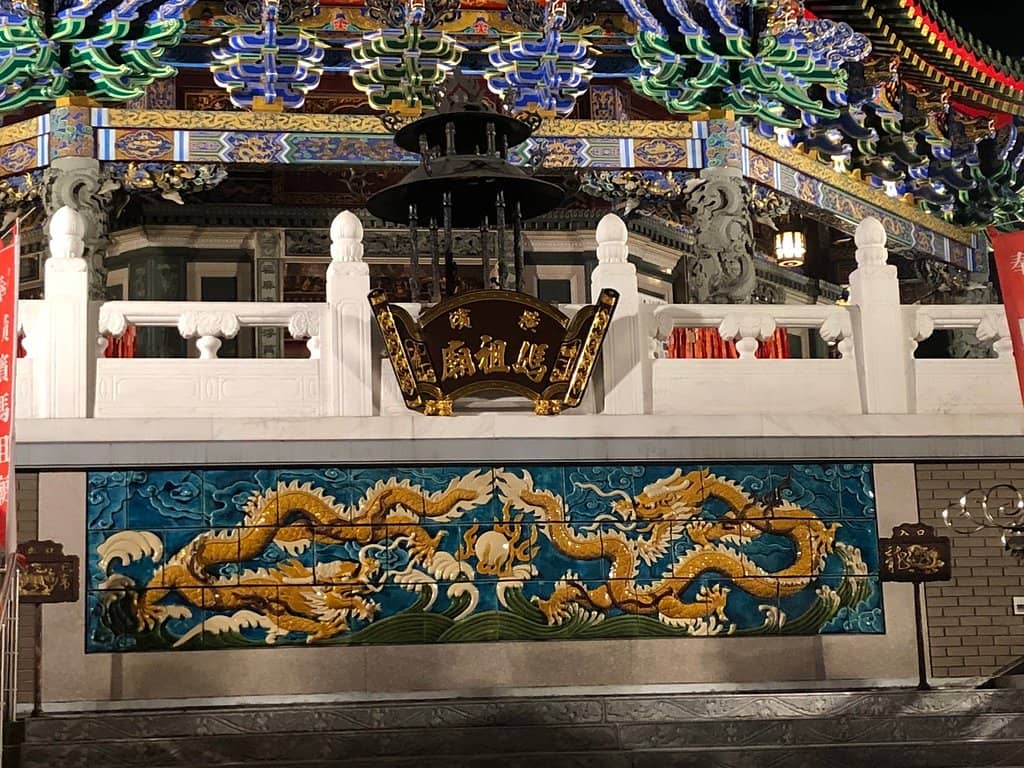
📸 Capture the Colors
The temple's vibrant colors and intricate details make it a photographer's dream. Visit during off-peak hours for unobstructed shots.
🙏 Offer a Donation
You can donate to worship Mazu, the goddess of the sea. It's a way to connect with the temple's spiritual significance.

Highlights
Discover the most iconic attractions and experiences

Grand Entrance Gate
Main entrance
A visually stunning gateway that sets the tone for the temple's vibrant architecture and cultural significance.
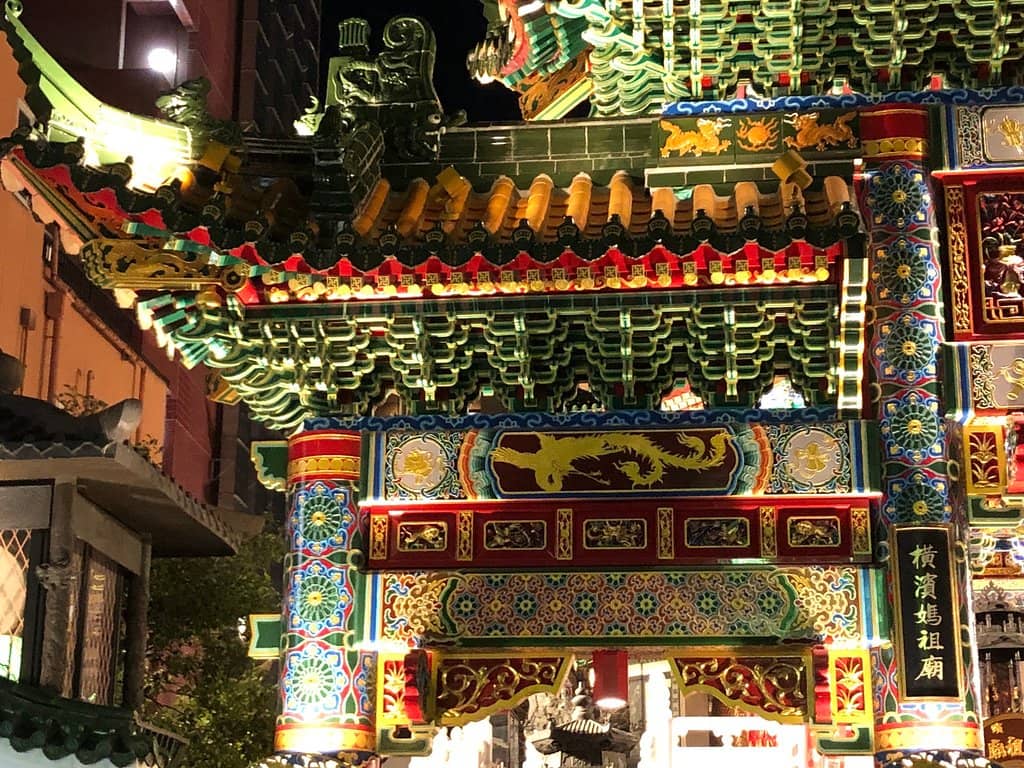
Dual Stairway
Leading to the main hall
An impressive dual stairway that enhances the temple's grandeur and provides a dramatic approach to the main deity.

Colorful Architecture
Throughout the temple grounds
Admire the intricate details and vivid colors of traditional Chinese temple architecture, perfect for photography.
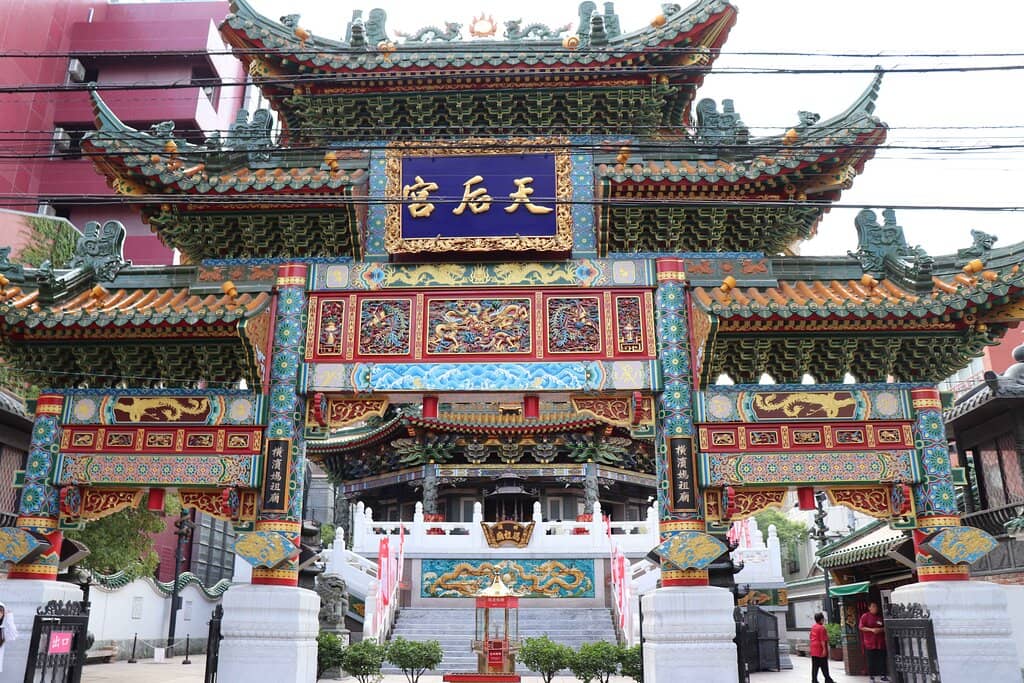
Chinese New Year Celebrations
Temple grounds and surrounding Chinatown
Experience energetic lion dances, traditional music, and a festive atmosphere during the Lunar New Year.
Plans like a pro.
Thinks like you
Planning Your Visit
Timing Your Visit to Masobyo Mazu Temple
Navigating Yokohama Chinatown
Best Times
Insider Tips
from TikTok, Instagram & Reddit
📸 Capture the Colors
The temple's vibrant colors and intricate details make it a photographer's dream. Visit during off-peak hours for unobstructed shots.
🙏 Offer a Donation
You can donate to worship Mazu, the goddess of the sea. It's a way to connect with the temple's spiritual significance.
🦁 Experience the Lion Dance
During festivals, the lion dance is a must-see! Let the lion 'bite' your head for good fortune.
🚶 Explore Chinatown
Masobyo Mazu Temple is in Yokohama Chinatown. Combine your visit with delicious food and exploring the lively streets.
Tips
from all over the internet
📸 Capture the Colors
The temple's vibrant colors and intricate details make it a photographer's dream. Visit during off-peak hours for unobstructed shots.
🙏 Offer a Donation
You can donate to worship Mazu, the goddess of the sea. It's a way to connect with the temple's spiritual significance.
🦁 Experience the Lion Dance
During festivals, the lion dance is a must-see! Let the lion 'bite' your head for good fortune.
🚶 Explore Chinatown
Masobyo Mazu Temple is in Yokohama Chinatown. Combine your visit with delicious food and exploring the lively streets.
📅 Check for Events
Unexpected events like dragon dances and traditional music can enhance your visit.
What Travellers Say
Reviews Summary
Masobyo Mazu Temple is praised for its stunning, colorful architecture and its significant cultural role within Yokohama Chinatown. Visitors appreciate the grandeur of its entrance and dual stairway, and many find it a beautiful and photogenic spot. While not ancient, its vibrant presentation and the lively atmosphere during events like Chinese New Year are highlights.
"Yokohama Mazu Miao is a Taoist temple dedicated to Mazu (also spelled Ma Zhu or Matsu), the Chinese sea goddess believed to protect sailors, fishermen, and travelers.
Though relatively new — the temple officially opened in 2006 — it combines vivid, traditional architectural styles with deep cultural and spiritual meaning.
Inside, the main altar honors Mazu, flanked by two guardian generals: Qianliyan (Thousand-Mile Eye) and Shunfeng’er (Fair-Wind Ear), who symbolically can see or hear over great distances to aid Mazu in her protection.
The temple also contains shrines to other deities — for instance, to the Jade Emperor, land gods, and deities of marriage and study, making it a multi-purpose spiritual center.
The temple is open daily (usually from around 9:00 to 19:00) and visitation is free — though there may be a small charge for incense or to enter inner parts for prayers."
Anna Krzak
"Yokohama MaZu Miao / Masobyo is a lovely place — vibrant, meaningful, visually beautiful. It may be newer, but it captures a lot of heart & tradition. Even if you’re not deeply religious, it’s very much worth a visit for culture, beauty, and a peaceful moment amid the bustle of Chinatown."
owen Utsey
"Very beautiful temple with rich decorations dedicated to different divinities. The people there were welcoming ! I really recommend to visit it just before sunset !"
Léa Pailley
What People Like
What People Dislike
Frequently Asked Questions
🚇 🗺️ Getting There
Masobyo Mazu Temple is located in Yokohama Chinatown. You can take a train from Tokyo to Yokohama Station (approx. 30-40 minutes on the JR Tokaido Line or Shonan-Shinjuku Line). From Yokohama Station, you can take the Minatomirai Line to Motomachi-Chukagai Station, which is a short walk to Chinatown and the temple. Alternatively, buses are also available.
Unfortunately, there is no dedicated parking lot for the temple itself. Visitors are advised to use public transportation or nearby public parking facilities in Yokohama Chinatown.
Yokohama Chinatown is best explored on foot. Wear comfortable shoes and be prepared for bustling crowds, especially on weekends. Many visitors enjoy a food crawl, trying various Chinese delicacies.
Yes, Masobyo Mazu Temple is a popular day trip destination from Tokyo. The journey is relatively short, allowing ample time to explore the temple and Yokohama Chinatown.
Yes, Yokohama Chinatown is very accessible via public transport. The Motomachi-Chukagai Station on the Minatomirai Line is the closest station, making it convenient to reach the temple and surrounding attractions.
🎫 🎫 Tickets & Entry
Masobyo Mazu Temple is generally free to enter and explore. While there's no admission fee, donations are welcomed to support the temple's upkeep and activities.
The temple is typically open during daylight hours, aligning with the general operating times of Yokohama Chinatown. Specific hours can vary, but it's usually accessible from morning until early evening. It's always a good idea to check their official website for the most current information.
Yes, Masobyo Mazu Temple is known for its vibrant Chinese New Year celebrations, featuring lion dances and traditional music. Other cultural events may also occur throughout the year.
Photography is generally allowed within the temple grounds, and its colorful architecture makes it a popular spot for photos. However, always be respectful of worshippers and avoid intrusive photography.
Yokohama Chinatown itself does not have an entrance fee. You can freely wander through its streets and explore the various shops and restaurants. The Masobyo Mazu Temple is also free to enter.
🎫 🧭 Onsite Experience
Mazu is a Chinese goddess of the sea, revered for protecting sailors and guiding them. She is particularly important to people from southern China and the diaspora.
The grand dual stairway at Masobyo Mazu Temple enhances the temple's impressive appearance and provides a ceremonial pathway to the main hall, making the grounds feel more expansive.
The praying method follows Chinese traditions, with numbered altars for sequence and optional kneeling pillows. You might also find Japanese-style charms sold, reflecting a blend of influences.
Yes, Masobyo Mazu Temple is considered family-friendly. Children can enjoy the vibrant colors and the festive atmosphere, especially during events like Chinese New Year.
To fully appreciate the temple's atmosphere, try to visit during a less crowded time. Observing the architecture, the rituals, and the general ambiance of Chinatown can be very rewarding.
🍽️ 🍽️ Food & Dining
Yokohama Chinatown is famous for its diverse range of Chinese cuisine, from dim sum and Peking duck to ramen and various street food snacks. Many visitors enjoy a food tour to sample different dishes.
Absolutely! Masobyo Mazu Temple is located in the heart of Yokohama Chinatown, which is packed with numerous restaurants offering authentic Chinese dishes. You can find everything from casual eateries to more upscale dining experiences.
Popular choices include dim sum, steamed buns, Peking duck, and various noodle dishes. Don't miss out on trying some of the street food snacks like grilled skewers or sweet treats.
While traditional Chinese cuisine can be meat-heavy, many restaurants in Yokohama Chinatown are increasingly offering vegetarian and vegan options. It's advisable to check menus or ask staff for recommendations.
Yokohama Iekei ramen is a local specialty characterized by its rich, tonkotsu (pork bone) and shoyu (soy sauce) broth, often served with thick noodles and toppings like chashu pork and spinach. It's a popular dish to try in Yokohama.
📸 📸 Photography
The grand entrance gate, the dual stairway, and the colorful architectural details are prime spots for photography. The vibrant red and gold hues offer stunning visual appeal.
To capture the temple without large crowds, aim for weekday mornings. Golden hour light can also enhance the colors and atmosphere, but be mindful of temple hours.
Generally, photography is permitted for personal use. However, it's crucial to be respectful of worshippers and avoid disruptive photography, especially during ceremonies or prayer times.
A camera that handles vibrant colors well is ideal. Whether you use a DSLR, mirrorless, or even a good smartphone camera, focus on capturing the intricate details and the lively atmosphere.
Yes, the lion dance is a highlight of Chinese New Year celebrations and a great photo opportunity. Be prepared for crowds and try to find a good vantage point.
For Different Travelers
Tailored advice for your travel style
👨👩👧 Families with Kids
Combine your visit with exploring the rest of Yokohama Chinatown, which offers a wide variety of food options that can appeal to younger palates, from sweet treats to more adventurous snacks. The bustling atmosphere of Chinatown itself can be an adventure for families. Remember to wear comfortable shoes as you'll likely be doing a lot of walking.
📸 Photography Enthusiasts
Experiment with different angles and lighting to capture the essence of the temple. The surrounding Yokohama Chinatown also provides a rich backdrop for street photography and capturing the local culture. Don't forget to explore the temple's details, from the roof ornaments to the prayer halls, for unique perspectives.
🍜 Foodies
Many visitors recommend a food crawl to sample a variety of dishes. Look out for local specialties like Yokohama Iekei ramen or try various steamed buns and skewers. The temple visit can be perfectly complemented by a delicious and memorable culinary exploration of Chinatown.
Deep Dives
In-depth insights and expert knowledge
The Significance of Mazu
The worship of Mazu is deeply rooted in maritime culture, and her temples often serve as spiritual anchors for communities reliant on the sea. The rituals and traditions associated with Mazu worship emphasize her benevolent nature and her role as a compassionate protector. Visitors can learn about her stories and significance by observing the temple's iconography and perhaps engaging with local guides or information provided within the temple premises.
While the core of Mazu worship is Chinese, the temple in Yokohama exhibits a fascinating blend of influences. You'll find traditional Chinese prayer methods, such as numbered altars and kneeling pillows, alongside elements that echo Japanese shrine practices, like the sale of charms. This fusion reflects the unique cultural landscape of Yokohama and the integration of traditions within the local community.
Exploring Yokohama Chinatown
The culinary scene in Yokohama Chinatown is a major draw. Visitors can indulge in a wide array of dishes, including dim sum, Peking duck, various noodle soups like the local Iekei ramen, and countless street snacks. Many TikTok creators highlight their food adventures here, rating different dishes and sharing their favorite finds, making it a foodie's paradise.
Beyond the food, Chinatown offers a rich cultural experience. The streets are lined with shops selling everything from traditional Chinese medicine and tea to souvenirs and decorative items. The lively atmosphere, especially during festivals like Chinese New Year, is infectious, with lion dances and parades adding to the festive spirit. Masobyo Mazu Temple stands as a significant cultural landmark within this dynamic district, offering a spiritual respite amidst the energetic surroundings.
Photography Opportunities
To capture the best shots, consider visiting during off-peak hours, ideally on a weekday morning, to avoid large crowds and allow for more creative framing. The golden hour before sunset can also cast a warm glow on the temple, enhancing its beauty. However, always be mindful of worshippers and avoid intrusive photography, especially during prayer times or ceremonies.
Many visitors share their photographic experiences on platforms like TikTok and Instagram, showcasing the temple's photogenic qualities. Whether you're using a professional camera or a smartphone, the temple provides ample subjects for capturing memorable images. The surrounding Yokohama Chinatown also offers a wealth of photographic subjects, from street scenes to culinary delights.
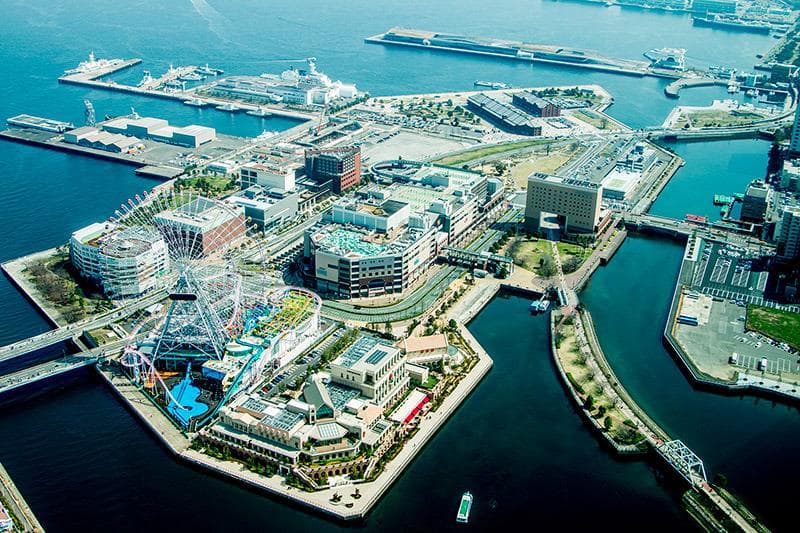
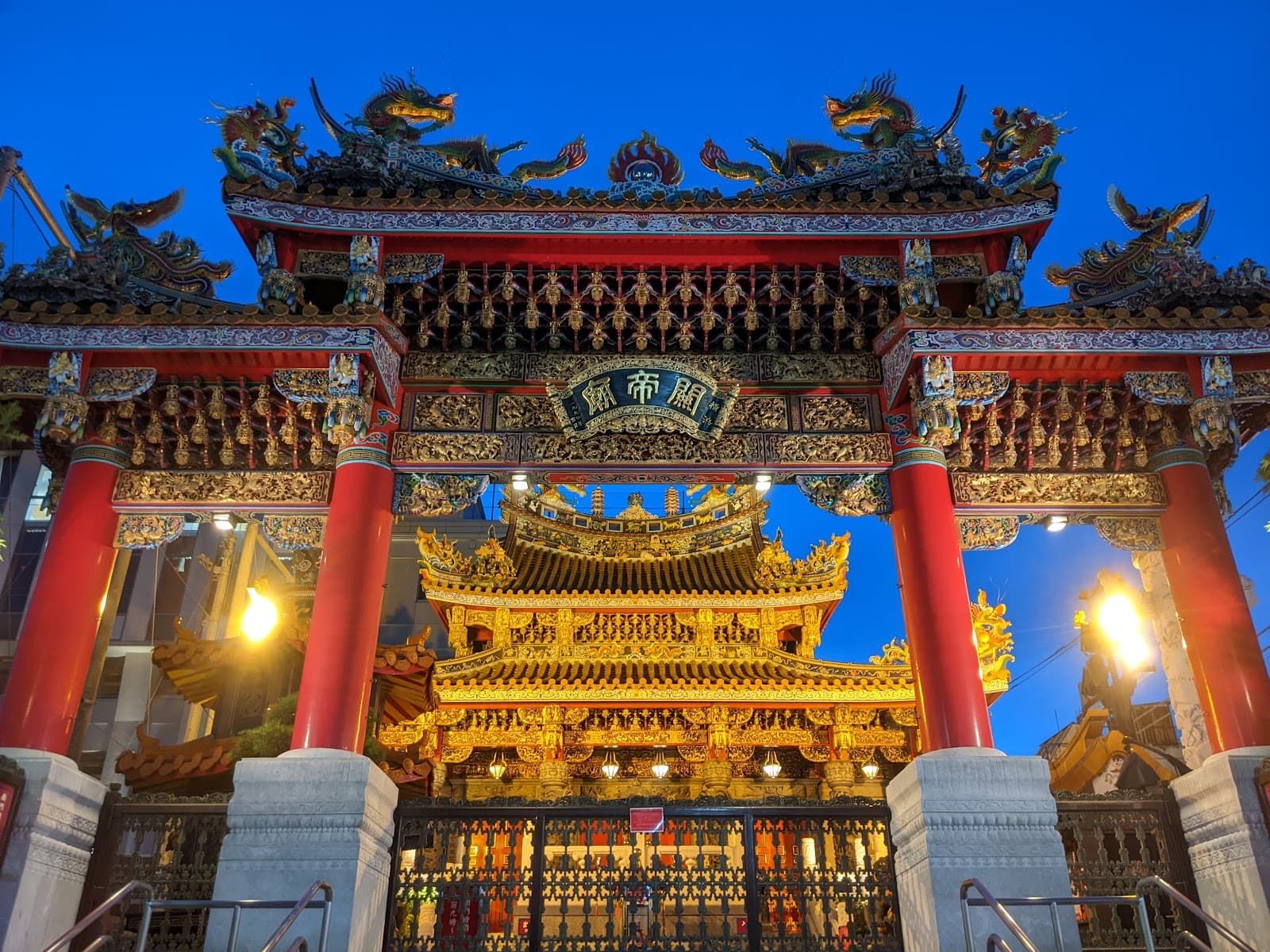

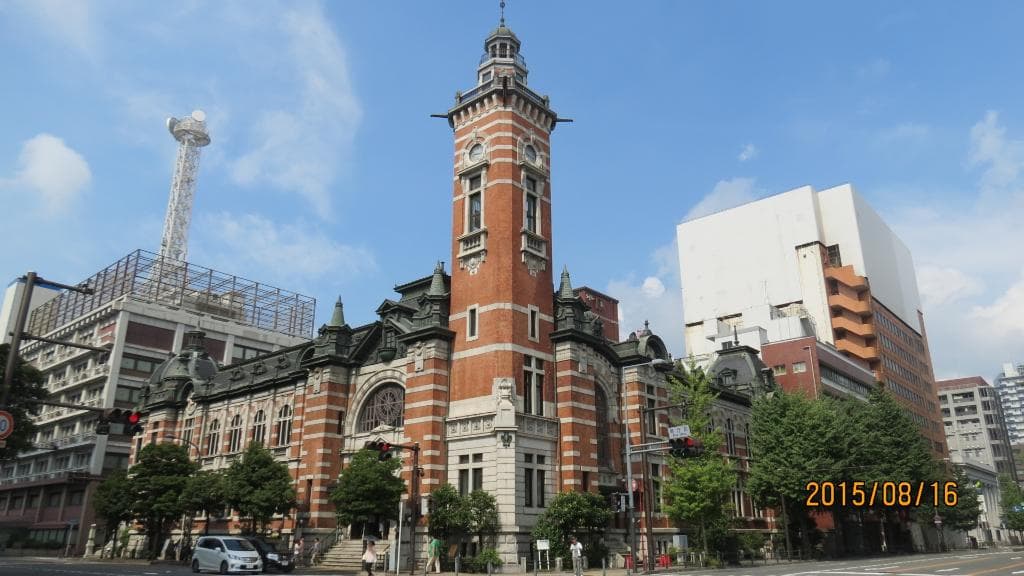
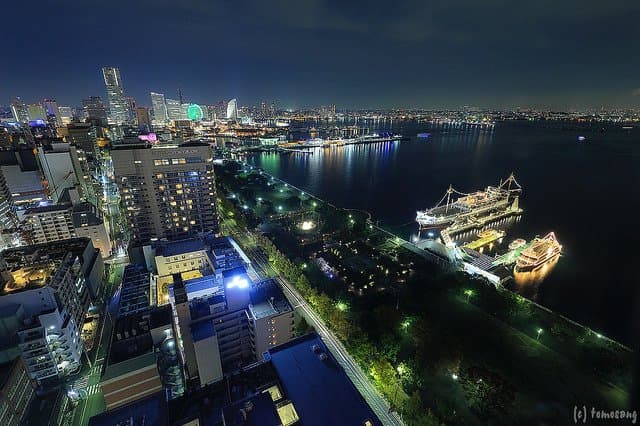

Social
from TikTok, Instagram & Reddit